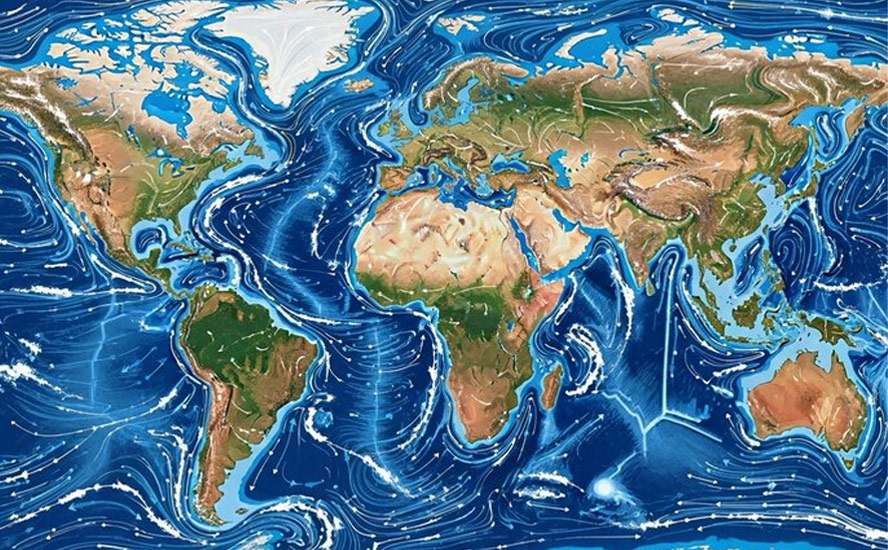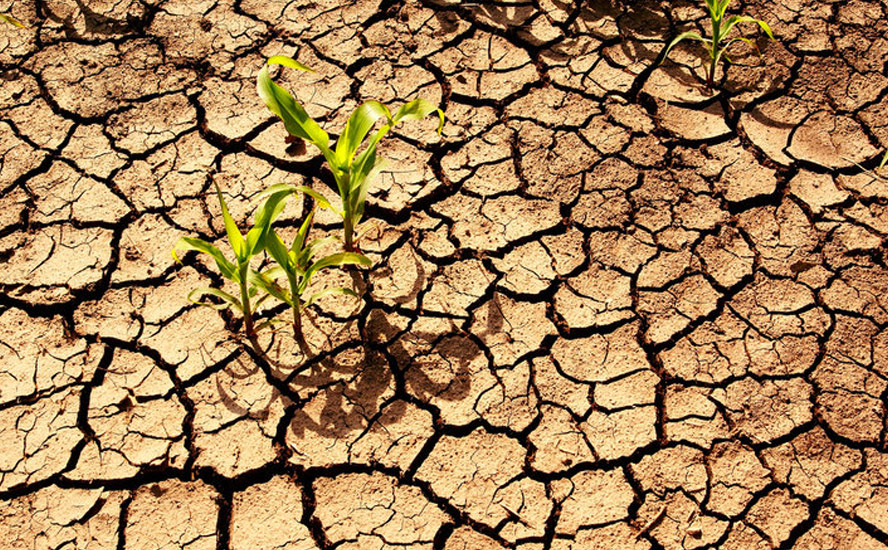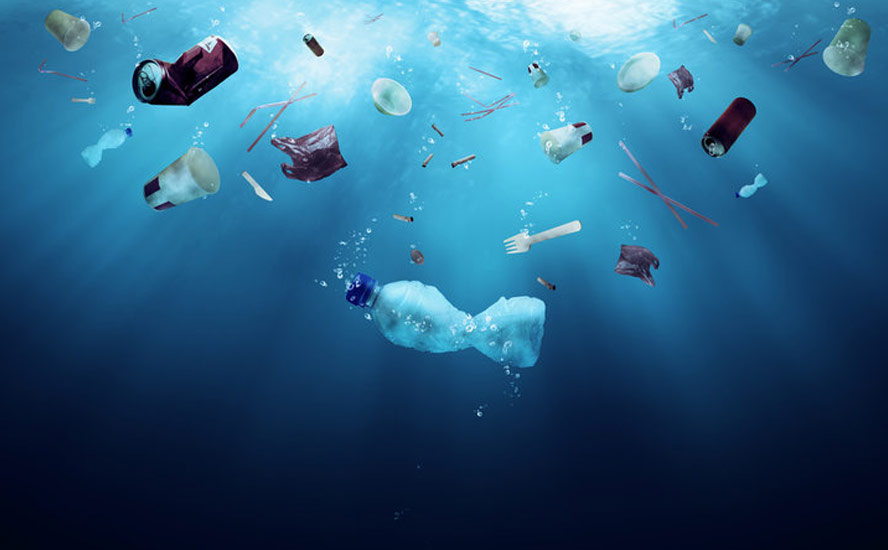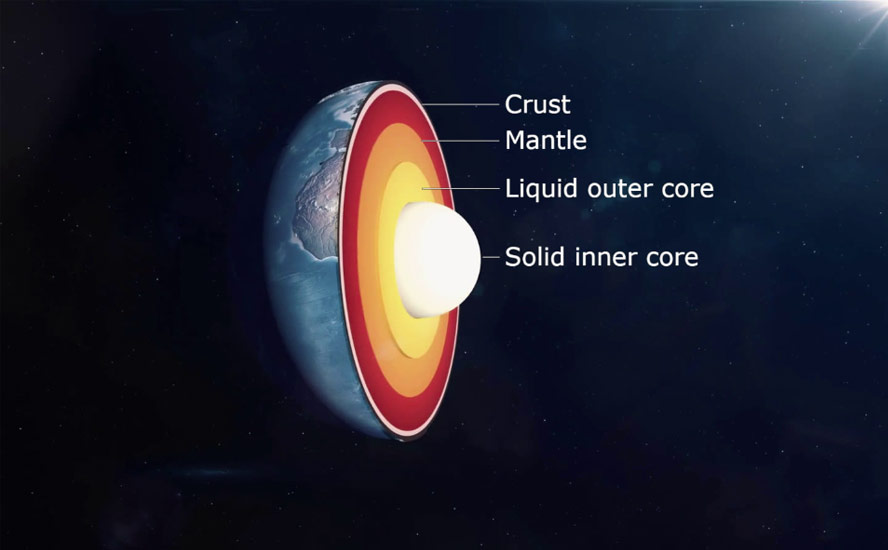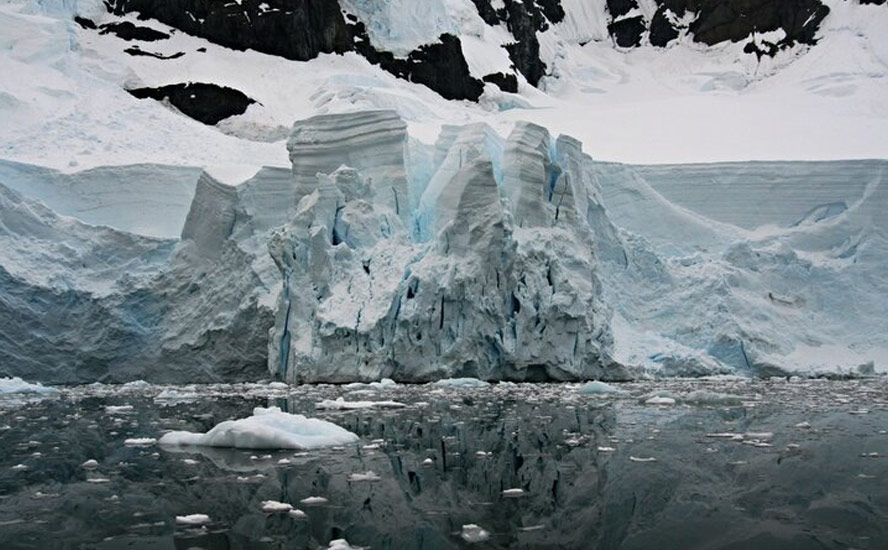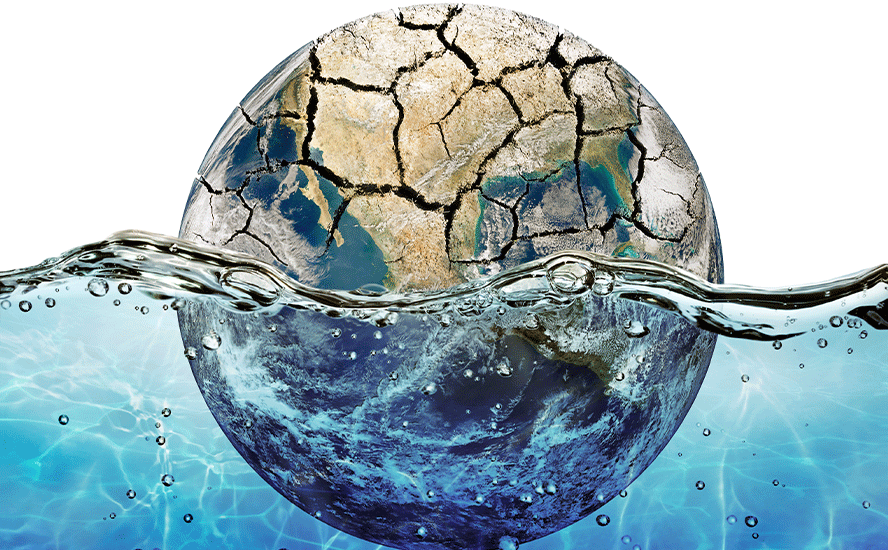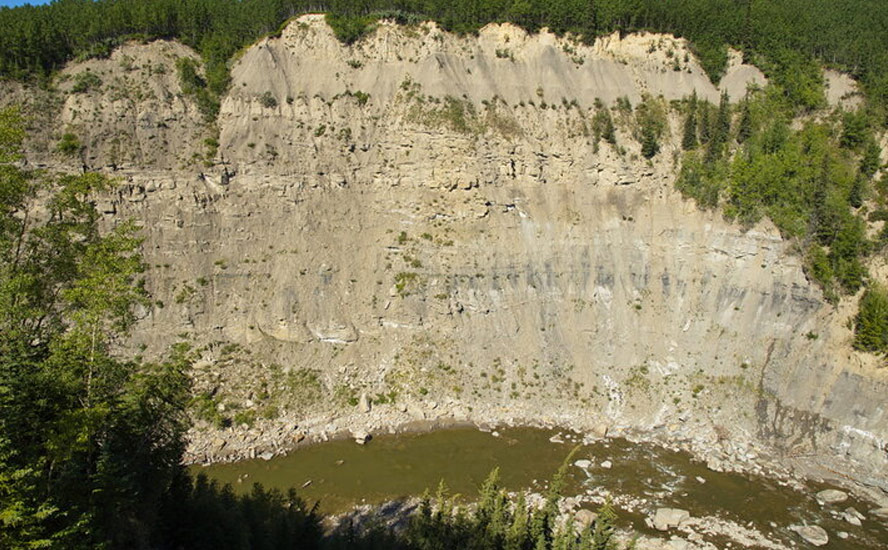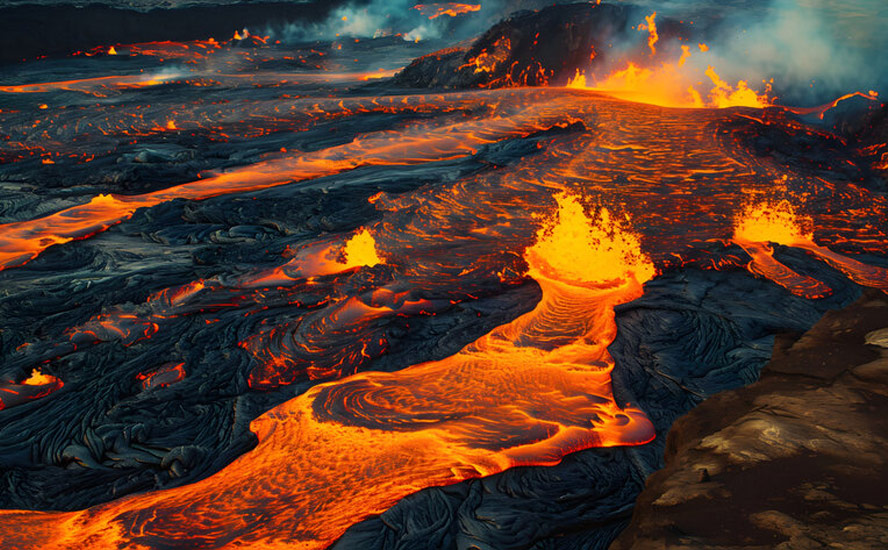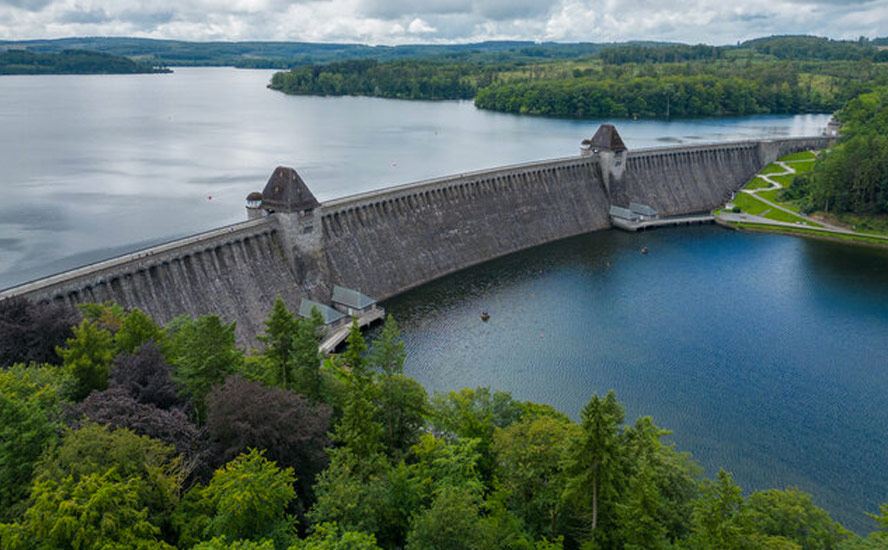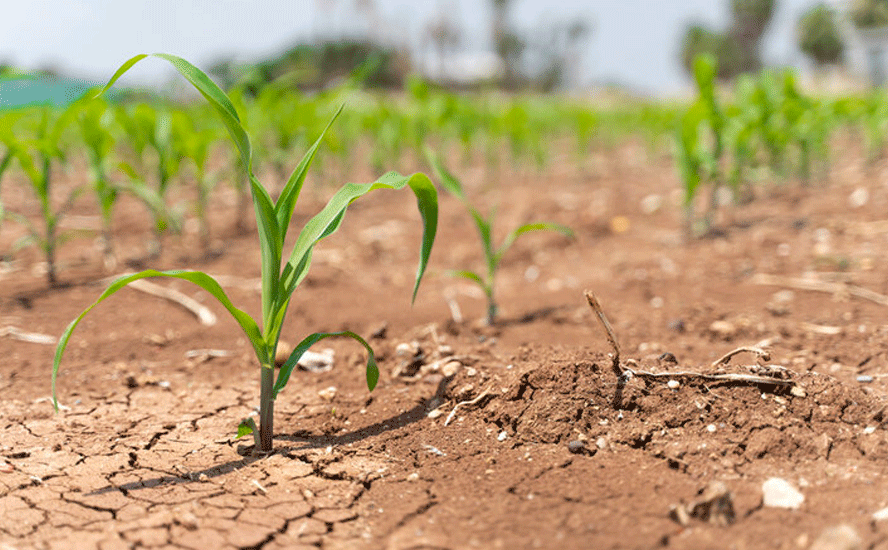Government mandates cutting fertilizer emissions threaten to reverse the ‘Green Revolution’
2022.08.04
The impacts of climate change are being felt each passing year. They are manifested in extreme weather events, including heat waves and droughts; more, larger and hotter forest fires; sudden deluges that swell rivers and break dikes, causing widespread damage to farms, towns, roads & bridges, such as last November’s flooding in southern BC; landslides/ mudslides; an increase in the frequency and intensity of storms; a rise in sea levels that puts ocean-side communities at risk; and saltwater intrusion which ruins crops and contaminates aquifers.
The need to do something about climate change, which in my opinion, is unstoppable — the Earth will continue to warm until it starts cooling, as its natural cycles have done for billions of years — has prompted a number of government initiatives. Some make sense, such as offering rebates to electric-vehicle buyers, and strata corporations, to install EV charging stations, as the car industry undergoes a fundamental shift from fossil-fueled vehicles to electric models.
Others, frankly, are stupid as hell. This includes the rush to electrification, not understanding that transitioning from an oil-based global economy to one grounded on electric vehicles and renewable power, must be done gradually.
Instead, governments around the world are choosing to de-invest in oil and gas, and instead are plowing funds into renewable energies even though they aren’t yet ready to take the place of standard fossil-fueled baseload power, i.e., coal and natural gas. Germany is a good example of a country that tried to switch too soon to renewable energy, retiring its nuclear and coal power plants, only to find that the wind and sun didn’t produce enough electricity.
The war in Ukraine has exposed Europe’s near-total dependence on Russian natural gas, and soaring energy prices have led to renewed investment in fossil fuels. According to Climate Tracker, via the BBC, new liquefied natural gas (LNG) facilities are now proposed in Germany, Italy, Greece, the Netherlands and Canada. The US, Qatar, Egypt and Algeria have all signed deals to export LNG to different parts of the EU, while gas projects are being revived in west Africa.
The latest government boondoggle targets the agriculture sector, responsible for 14.5% of greenhouse gas emissions (including cow burps and farts, which amount to 9.4% alone). The Trudeau Liberals are proposing to cut nitrous oxide emissions from fertilizer 30% by 2030 — part of a plan to get to “net zero” emissions by 2050.

To be clear, the Canadian government is not saying that farmers must reduce fertilizer application by 30%; but farmers maintain that cutting nitrous oxide emissions can’t be done without lowering fertilizer use (more on that below), meaning shrinking crop production during a time when the world is facing a food crisis. (grain from Ukraine ports just started flowing again, after being stuck there due to the war which has been raging since the end of February). Canadian farmers could lose an estimated CAD$10.4 billion this decade from the reduced output.
This puzzling decision comes in the wake of new nitrogen limits in the Netherlands, requiring farmers to radically curb their nitrogen emissions by 70% in the next eight years. Like in Canada, they are being forced to use less fertilizer, and reduce their number of livestock, in some cases by up to 95%. Angry Dutch farmers reportedly brought cows to parliament, threatened to slaughter them and blockaded food distribution centers serving major supermarkets.
Protesters have also smeared manure outside the home of the agriculture minister, and blocked highways with hay bales and tires.
The Netherlands, surprisingly, is the world’s second largest agricultural exporter, after the United States. However, it also has the highest density of livestock in Europe, with more than 100 million cattle, chickens and pigs in total, more than 4X that of the UK or France.
The country’s intensive livestock farming system produces a large amount of animal feces. When mixed with urine, cow dung gives off ammonia and nitrous oxide, a greenhouse gas said to account for 6% of global GHG emissions.
In December the Dutch coalition government passed a controversial law to buy out cattle farmers to reduce pollution. The €25 billion program, the first of its kind in the world, faces a huge backlash from farmers, who according to The Guardian, fear permanent damage to food production in the country if too many farmers are forced to quit. The Dutch government insists that any buy-outs would be voluntary.
Ireland too is demanding that its farmers cut their emissions by 25%, as the government sets binding objectives to slash overall carbon emissions by 51% by 2030.
Meanwhile in Sri Lanka, a 2021 decision to ban the use of chemical fertilizers, was dropped by the government seven months later, following widespread protests.
All of this is part of a disturbing trend, of governments targeting farmers and their use of inorganic fertilizer, to dial back greenhouse gas emissions. What many fail to realize, is that this will have very negative consequences on world food production. In their haste to “go green”, governments risk un-doing all of the advances of the “Green Revolution”, a movement responsible for curbing global famine and allowing the growth of the world’s population to its current 7.96 billion.
The Green Revolution
The modernization of the global agricultural industry led to history’s greatest explosion in food production. The agricultural reforms and resulting production increases fostered by the Green Revolution are responsible for avoiding widespread famine in developing countries and for feeding billions more people since. The Green Revolution also helped kickstart a substantial increase to the world’s population — it took only 40 years for the population to double from 2.5 billion to five billion, between 1950 and 1990.
Norman Borlaug, an American scientist, is often called “the father of the Green Revolution”. In 1943 he began conducting research regarding developing new disease-resistant, high-yielding varieties of wheat.
Through selective breeding, Borlaug created a dwarf variety of wheat that resulted in more grain per acre. Similar research at the International Rice Institute dramatically improved the productivity of rice, a cereal grain that feeds half the world.

From the 1960s to the 1990s, rice and wheat yields in Asia doubled, and though the continent’s population increased by 60%, grain prices fell, the average Asian consumed nearly a third more calories, and the poverty rate was cut in half. When Borlaug won the Nobel Peace Prize in 1970, the citation read, “More than any other person of this age, he helped provide bread for a hungry world,” states National Geographic.
The term Green Revolution refers to a series of research, development and technology transfers that happened between the 1940s and the late 1970s. The initiatives involved:
- Development of high-yielding varieties of cereal grains
- Expansion of irrigation infrastructure
- Modernization of management techniques
- Mechanization
- Distribution of hybridized seeds, synthetic fertilizers, and pesticides to farmers
Tractors with gasoline-powered engines (versus steam) became the norm in the 1920s after Henry Ford developed his Fordson in 1917 — the first mass-produced tractor. This new technology was available only to relatively affluent farmers and it was not until the 1940s that tractor use became widespread.

Electric motors and irrigation pumps made farming and ranching more efficient. Major innovations in animal husbandry — modern milking parlors, grain elevators, and confined animal feeding operations — were all made possible by electricity.
Advances in fertilizers, herbicides, insecticides, fungicides, antibiotics and growth hormones led to better weed, insect and disease control.
There were also advances in plant and animal breeding — crop hybridization, artificial insemination of livestock, and genetically modified organisms (GMOs).
Further down the food chain came innovations in food processing and distribution.
All these new technologies increased global agriculture production with the full effects starting to be felt in the 1960s.
The “revolution” in Green Revolution is well deserved.
The use of hybrid seeds, irrigation, chemical fertilizers, pesticides, farm machinery, and high-tech growing and processing systems combined to greatly increase agricultural yields. The Green Revolution is responsible for feeding billions — and enabling the birth of millions more.
Cereal production more than doubled in developing nations — yields of rice, maize, and wheat increased steadily. Between 1950 and 1984 world grain production increased by over 250% and the world added over 2 billion more people for dinner. And synthetic fertilizers were the foundation for all of it.
Importance of fertilizer
The key input in agriculture is fertilizers, which farmers use to supplement natural soil nutrients, antibiotics to prevent animal diseases, and pesticides to protect crops against animals, insects, weeds and various microorganisms. Fertilizers used by farmers today are synthetically created, as they have proven to produce much larger crop yields than organic sources for over a century.
It’s estimated that almost half the people on Earth are currently fed as a result of synthetic/ inorganic nitrogren fertilizer use.
When the cost of synthetic fertilizers rises, food prices naturally increase. That’s exactly what is happening around the world right now; the cost of fertilizer raw materials — ammonia, nitrogen, nitrates, phosphates, potash and sulfates — has gone up significantly since 2008, with the problem made far worse by the war in Ukraine.
Russia and Ukraine together provided around 30% of the global wheat supply and 20% of maize exports over the past three years. It’s been ballparked that nearly 25 million tonnes of grain have been eliminated from the supply chain since Russia’s blockade of Ukrainian ports.
Western sanctions against Russia and neighboring Belarus essentially placed a sizable share of the world’s available fertilizer off-limits. Russia is the world’s top exporter of nitrogen fertilizer and second in phosphorous and potassium fertilizers.
Prices earlier this year exceeded those seen during the 2008 food and energy crisis, according to British commodity consultancy CRU. The chart below shows average weekly urea prices for 2020, 2021, 2022, and the five-year average.

After touching a record-high in March, fertilizer costs including urea have retreated somewhat (the red line in the chart above), however most fertilizers are still considerably higher than a year ago, according to fertilizer prices tracked by DTN.
Fertilizer is so important to farmers, that even a relatively small increase in price can mean the difference between profit and loss. If it becomes too expensive, many will not use fertilizers at all, which lowers the quality and amount of food production. (fertilizer accounts for approximately 15% of total cash costs in the US)
The main culprit behind skyrocketing fertilizer costs is natural gas, used as a raw material to produce ammonia, the building block for all nitrogen fertilizers, which account for most of the world’s fertilizer consumption. Typically 60% to 80% of production costs are natural gas costs. In some countries such as China, coal is also gasified into ammonia and used for manufacturing fertilizers.
Thus, it’s inevitable that when natural gas and coal prices increase, so does the cost of making fertilizers. In the US, natural gas prices in 2022 hit their highest since 2008, while coal prices also topped $100/ton for the first time since then.
Compounding the issue, food producers compete with other industries for energy use; the production of biofuel, for example, diverts crops away from the agricultural sector, while the production of lithium-ion batteries requires chemicals used in fertilizer production.
Due to high natural gas prices in Europe, various fertilizer companies have been forced to shut down, leading to concerns around food supply. This past March, the United Nations said its world food-price index reached the highest level since it started in 1990.
According to NPR, The fertilizer crunch threatens to further limit worldwide food supplies, already constrained by the disruption of crucial grain shipments from Ukraine and Russia. The loss of those affordable supplies of wheat, barley and other grains raises the prospect of food shortages and political instability in Middle Eastern, African and some Asian countries where millions rely on subsidized bread and cheap noodles.
“My biggest concern is that we end up with a very severe shortage of food in certain areas of the world,” Tony Will, the chief executive of the world’s largest nitrogen fertilizer company CF Industries Holdings, said in a Bloomberg interview.
It’s already happening. Reuters reported on Wednesday that global wheat consumption is heading for its biggest annual decline in decades. Consumers could face even higher wheat prices in the second half of 2022, as importers, who up to now have supplied cargoes bought several months ago at cheaper prices, pass on the costs from when wheat prices scaled decade highs in May. Traders and millers say that global consumption in H2 could drop by 5-8% from a year ago, much faster than the Department of Agriculture’s forecasted 1% contraction.
Kicking Canadian farmers when they’re down
Circling back to Canada, farmers are not only having to deal with a government-mandated reduction in fertilizer emissions, which effectively means lower fertilizer applications and lower output, but a tariff on Russian fertilizer imports.
In March, as part of the Canadian government’s decision to punish Russia for attacking Ukraine, a 35% tariff on virtually all Russian imports was imposed, including nitrogen fertilizer that farmers rely on to boost crop yields. Canada is the only nation within the G7 to target fertilizer.
The timing was bad, only a few weeks before the start of the spring planting season, when farmers make important decision on what crops to grow, and place orders for seeds and fertilizers months in advance.
According to CBC, before the tariff was imposed, Russia was exporting 660,000 tonnes of nitrogen fertilizer annually to Eastern Canada — an amount that represented 85-90% of the total fertilizer applied.
The public news service notes that a 35% hike from the tariff, when combined with farmers’ already-inflated energy and gasoline bills, puts a lot of upward pressure on commodity prices.
Farm groups including those in Ontario, Quebec and Atlantic Canada, are calling on the federal government to re-consider the tariff, and/or provide compensation to farmers. They say another option would be for Canada to consider expanding the domestic supply of fertilizer, so that growers are less dependent on foreign sources and don’t find themselves in the same predicament next year and in future years.
Canada has enough natural gas to become self-sufficient in fertilizer.
Yet instead of investing in its own fertilizer industry, the federal government decided, at a recent meeting of federal and provincial/ territorial ministers of agriculture, to reduce fertilizer emissions 30% from 2020 levels by 2030.
Alberta, Saskatchewan, Manitoba and Ontario have urged Ottawa to reconsider its “shortsighted” fertilizer emissions goals, which according to Equity Guru, would slash farmers income, worsen the current food crisis and continue to put upward pressure on food prices in Canadian grocery stores.
A joint press release from the governments of Saskatchewan and Alberta stated:
“Western Canadian farmers already produce the most sustainable agri-food products in the world, and they’re continually being asked to do more with less. We cannot feed the growing world population with a reduction in fertilizer,” the press release stated.
“The world is looking for Canada to increase production and be a solution to global food shortages. The Federal government needs to display that they understand this,” Alberta minister Nate Horner said.
The tension comes as efforts to reduce carbon dioxide emissions related to energy (as mentioned the war in Ukraine has meant a renewed investment in fossil fuels) are lagging. Policymakers are therefore looking at other sectors, including agriculture, to make reductions. In Canada, agriculture contributes to 10% of the country’s total greenhouse gas emissions.
Bloomberg cites the latest data from Environment Canada, stating that emissions from crop soils rose 87% through 2020, to about 7.6 tonnes of carbon dioxide over three decades. While significant, this is nine magnitudes less than emissions from oil and gas extraction, which more than tripled by 69 tonnes of CO2 during the same period.
Farm groups quotes by Bloomberg say the additional fertilizer is resulting in more food. Spring wheat yields rose more than 40 per cent in the last decade through 2020, compared with the 1990s, Statistics Canada data show. Similarly, canola yields rose 56 per cent over the same period.
Government-imposed reductions in fertilizer usage, to meet the required 30% drop in nitrous oxide emissions, could result in major reductions in food output and onerous costs to Canadian farmers. The country stands to lose over 160 million tonnes of canola, corn and spring wheat between 2023 and 2030, according to an analysis commissioned by Fertilizer Canada — an amount that is nearly double Canada’s expected grain production this season.
Another report, compiled by accounting firm Meyers Norris Penny (MNP), suggests that regulated fertilizer reduction could cost Canadian farmers $48 billion by 2030, and reduce crop sizes.
“Canada is already among the top countries that use nitrogen efficiently. We don’t have much room to go before we start affecting yields,” says Karen Proud, the executive director of Fertilizer Canada.
Notwithstanding the emissions announcement, Canadian farmers have been trying, throughout 2022, to reduce their fertilizer usage due to the high cost of the essential crop input. For example, they are using specialized equipment to apply it more efficiently, and drones to pinpoint which parts of a field are most and least productive.
Under the government’s emissions plan, farmers will likely be forced to use costlier “green” fertilizer, which translates to higher grocery prices. It’s no different from electricity customers in Europe receiving exceedingly high bills due to their governments’ bull-headed plans to switch to more expensive renewable energy.
Agriculture and Agri-Food Minister Marie-Claude Bibeau says the government is investing in the fertilizer industry by funding research and innovation and helping farmers find new suppliers.
“I’m meeting with many farmers in the field. I know how much they care for the environment and how much they invest in new practices and new technologies to reduce their emissions as much as possible,” Bibeau said at a press conference, last month. “The idea is to produce the most sustainable food in the world.”
Ryan Koeslag, from the Ontario Bean Growers said “It’s hard to be a green farmer when you’re operating in the red.”
Marie-Claude Bibeau appears to me uniquely unqualified to tell Canadian farmers how they should run their operations. The Liberal MP from Compton-Stanstead, Quebec, owned a tourism business before getting elected in 2015. She previously served as the Minister of International Development. Neither role would have provided her with the background needed for a plumb ministerial position in agriculture.
Biden’s biofuels
So far, the United States has yet to grab the mantle being seized by Canada, Ireland and the Netherlands, in targeting the agriculture sector for achieving climate-related emissions targets. However, it won’t be long before American farmers are forced to reduce their yields on account of more costly fertilizer, if it isn’t happening already.
Note that one of the byproducts of the war in Ukraine, is that US farmers are no longer receiving fertilizer that Russia and its ally, Belarus, have until recently, provided the world. The fertilizer that is left has become much more expensive.
Also, the Biden administration has committed to reducing emissions 65% by 2030, and be net-zero by 2050, partly by substituting fossil fuels for biofuels. Defined as fuel derived from living matter, biofuels include corn (ethanol), used cooking oil (biodiesel) and wood waste, used to produce heat through gasification.
Large tracts of farmland, especially corn, used to make ethanol, could be pressed into service to satisfy Biden’s Executive Order, passed in December. In April the president announced the elimination of restrictions on the sale of E15, allowing the 15% ethanol-gasoline blend to be sold year-round.
While supporters hailed the decision as helping to reduce gas prices, which have skyrocketed as a result of the energy crisis brought on by the war in Ukraine, critics panned it. Chet Thompson, CEO of the American Fuel & Petrochemical Manufacturers, was quoted in the Des Moines Register saying that the blending requirement for this year is “contrary to the administration’s claims to be doing everything in their power to provide relief to consumers.”
“Unachievable mandates will needlessly raise fuel production costs and further threaten the viability of U.S. small refineries, both at the expense of consumers,” Thompson said.
Opponents of biofuels in general argue that, by taking land that could otherwise be used for growing food, they worsen poverty and hunger in developing countries, especially.
Of particular concern is what Biden’s 65% emissions reduction target could mean for the US military, given that over 75% of the federal government’s energy use is for defense. According to Energy Talking Points, The vast majority of this energy is fossil fuel—the most cost-effective and often only way to power our defense. Oil-based jet fuel alone is over 50% of DOD’s energy.


Biofuels scale terribly because they require huge amount of scarce farmland. They are also a security risk because their supply chain, for example phosphate, is heavily dependent on China. Synthetic oils would be hard-pressed to replace jet fuel because they are extremely expensive to produce, and for the foreseeable future, require fossil fuel to manufacture.
The bottom line, says Epstein, is that actually pursuing “net zero” would destroy our military and lead the US to be conquered by our enemies. Thus, our government will not pursue “net zero” at all consistently. But Biden’s public commitment to “net zero” guarantees myriad deadly half-measures.
For example the Navy’s Pacific Missile Range, a solar+battery installation, is far more expensive and less secure than using compact diesel generators, given the cost of batteries and vulnerability of solar arrays.
It’s baffling to try and understand how any of this could work, in a world where Russia is becoming more aggressive, and China is testing hypersonic missiles to become the world’s next superpower. Is the military really expected to run tanks, APCs and myriad other heavy equipment on batteries that depend on solar and wind power? It makes for some humorous scenarios. Like waiting for the tanks to be charged up before engaging the enemy. Perhaps future battles will only be fought under sunny and windy conditions.
Also consider how much fresh water, that is becoming more and more scarce as the south-central and south-western US continue to bake in a +20-year drought, would be wasted in the production of corn-based ethanol, on land that could be better used to grow food.

Bloomberg reported this week that, what little winter precipitation arrives at the Sierra Nevada mountains, in California, often lands as rain and is long gone by summer. Mountain snowpacks have shrunk on average by 23% between 1955 and 2022. By the end of this century California could lose up to 79% of its peak snowpack by water volume.
It makes sense for a crop that requires vast amounts of sunlight, to also be grown in areas where there just isn’t a lot of fresh water.

Sierra Nevada snowpack, April 2019 vs April 2022

Conclusion
If you wanted to reverse the effects of the Green Revolution, one of the best ways would be to take away farmers’ use of inorganic fertilizers. The Netherlands started this trend — at least they had a legitimate reason, too many animals producing too much manure — now Canada and Ireland are following suit. These countries, including our own government, are forcing farmers to plant less, which will hurt profit margins and in some cases, lead to bankruptcies. At the top of the food chain, consumers will pay more for grocery items whose ingredients (crops like corn, wheat, soy) have become more expensive, or the same prices for smaller packages, so-called “shrink inflation”.
Fertilizer reduction targets will inevitably destroy the food supply and put billions at risk of starvation and famine, all in the name of “going green”. The insanity of it is mind-boggling.
Thomas Malthus, the English cleric and scholar, famously predicted that gains in living standards would be undermined, as population growth outstripped food production, thereby driving living standards down to subsistence levels.
The “Malthusian dilemma” has not come to pass mainly because of technologies that increased food production.
Well now, governments have got it into their heads that the agriculture sector is a good place to target greenhouse gas emissions. What they don’t seem to realize, is that there is no way to reduce nitrous oxide levels without also lessening the use of fertilizers, that are required for producing healthy and bountiful crops. Seemingly without any sense of history — the Green Revolution and what it did — or understanding of agriculture, or just common sense, public officials want to take away what has enabled so many people around the world to enjoy a healthy diet rich in life-sustaining nutrients.
The Green Revolution helped kickstart the greatest explosion in human population in history – it took only 40 years (starting in 1950) for the population to double from 2.5 billion to five billion people.
We goosed agra-machine’s growth and saved a billion people who birthed billions more.
Norman Borlaug, father of the Green Revolution, is on record as saying if we did everything right, the Earth has a human carrying capacity of 10 billion people, the UN’s population target for 2050.
Modern leftist governments, though, have a new approach: they are forcing Malthusian famines by mandating fertilizer reductions.
Richard (Rick) Mills
aheadoftheherd.com
subscribe to my free newsletter
Legal Notice / Disclaimer
Ahead of the Herd newsletter, aheadoftheherd.com, hereafter known as AOTH.
Please read the entire Disclaimer carefully before you use this website or read the newsletter. If you do not agree to all the AOTH/Richard Mills Disclaimer, do not access/read this website/newsletter/article, or any of its pages. By reading/using this AOTH/Richard Mills website/newsletter/article, and whether you actually read this Disclaimer, you are deemed to have accepted it.
Any AOTH/Richard Mills document is not, and should not be, construed as an offer to sell or the solicitation of an offer to purchase or subscribe for any investment.
AOTH/Richard Mills has based this document on information obtained from sources he believes to be reliable, but which has not been independently verified.
AOTH/Richard Mills makes no guarantee, representation or warranty and accepts no responsibility or liability as to its accuracy or completeness.
Expressions of opinion are those of AOTH/Richard Mills only and are subject to change without notice.
AOTH/Richard Mills assumes no warranty, liability or guarantee for the current relevance, correctness or completeness of any information provided within this Report and will not be held liable for the consequence of reliance upon any opinion or statement contained herein or any omission.
Furthermore, AOTH/Richard Mills assumes no liability for any direct or indirect loss or damage for lost profit, which you may incur as a result of the use and existence of the information provided within this AOTH/Richard Mills Report.
You agree that by reading AOTH/Richard Mills articles, you are acting at your OWN RISK. In no event should AOTH/Richard Mills liable for any direct or indirect trading losses caused by any information contained in AOTH/Richard Mills articles. Information in AOTH/Richard Mills articles is not an offer to sell or a solicitation of an offer to buy any security. AOTH/Richard Mills is not suggesting the transacting of any financial instruments.
Our publications are not a recommendation to buy or sell a security – no information posted on this site is to be considered investment advice or a recommendation to do anything involving finance or money aside from performing your own due diligence and consulting with your personal registered broker/financial advisor.
AOTH/Richard Mills recommends that before investing in any securities, you consult with a professional financial planner or advisor, and that you should conduct a complete and independent investigation before investing in any security after prudent consideration of all pertinent risks. Ahead of the Herd is not a registered broker, dealer, analyst, or advisor. We hold no investment licenses and may not sell, offer to sell, or offer to buy any security.
Legal Notice / Disclaimer
Ahead of the Herd newsletter, aheadoftheherd.com, hereafter known as AOTH.Please read the entire Disclaimer carefully before you use this website or read the newsletter. If you do not agree to all the AOTH/Richard Mills Disclaimer, do not access/read this website/newsletter/article, or any of its pages. By reading/using this AOTH/Richard Mills website/newsletter/article, and whether you actually read this Disclaimer, you are deemed to have accepted it.


